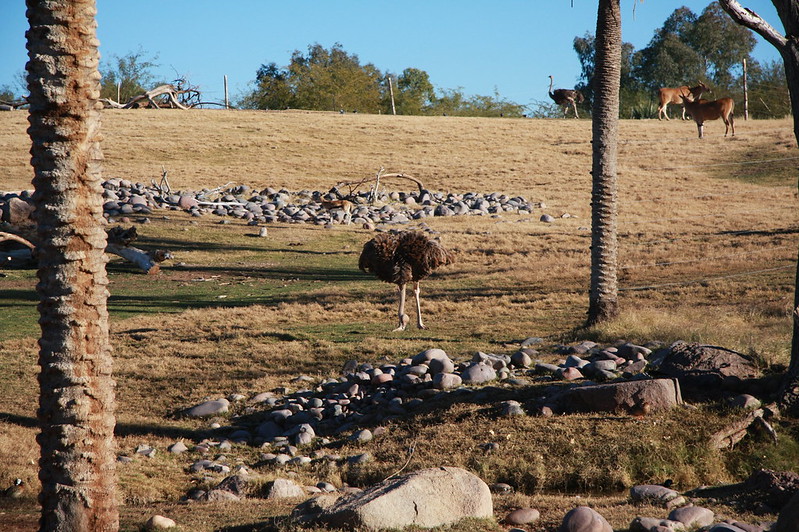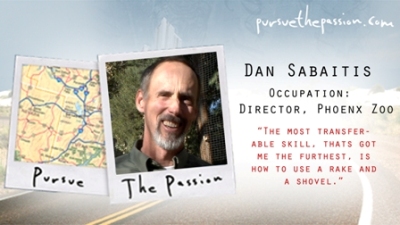
Interview: How To Become a Zookeeper
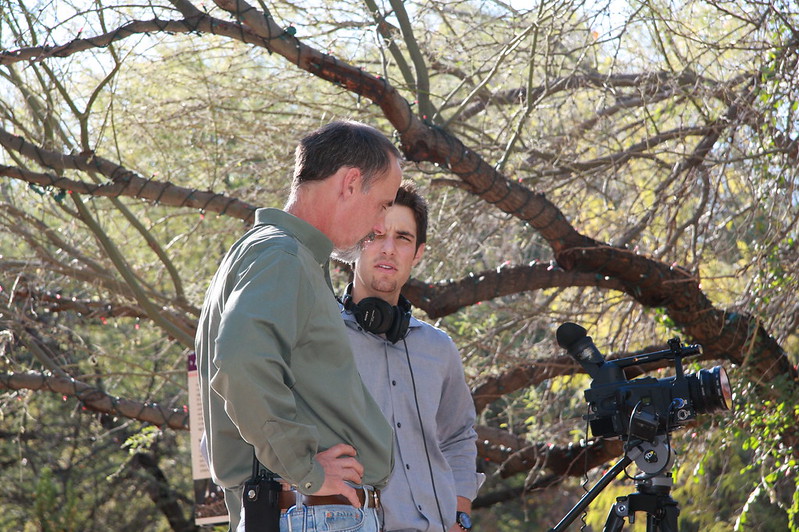
I oversee the entire living collection. Everything that’s an animal and plants. And everyone that takes care of those animals and plants. I’m responsible for helping plan the collection, which animals will go in which exhibits, and which animals we need to breed. I work with our national organization, the American Association of Zoos and Aquariums.
We determine how we can make exhibits more engaging to our guests so that our programs and education departments can get their message across through our exhibits. That’s the start of it.
I’m primarily administrative. One fortunate thing here at the Phoenix Zoo is that we’re a good sized zoo, but we’re not too big where I can get out in the field and work a bit with our managers and our keepers from time to time. But most of my work is administrative.
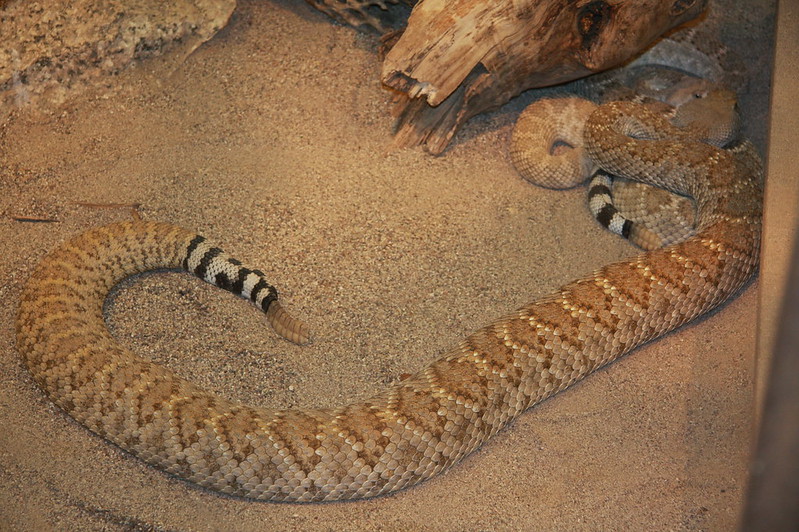
A lot of people think there’s a lot more romanticism in my job. The old Frank Buck ‘bring ‘em back to life’ attitude. A lot of what we do is scientific based, which is still very interesting, but not very romantic from time to time. One aspect of my job that’s really good is that having started as an animal keeper, I still have a lot of contact with the animals that I got into this business to work with.
I started working when I was at Brookfield Zoo when I was in high school. My high school backed up to Brookfield Zoo outside of Chicago. It was one of the larger zoos in the country, and I started working there as a seasonal keeper. I worked there summers and breaks through college. One thing led to another.
I’ve been lucky enough to travel all around the world in my job capacities. I spent a lot of time in Japan. I spent seven years in East Africa managing a private animal collection over there. I’ve had a great time. I’m one of those lucky people that enjoy what I do for a living. The older you get, the more you realize how rare that is. Most people tend to go for the money and not really follow their heart.
I was just having fun. I wanted to learn more and more about what I was doing. As a result, one thing led to another.
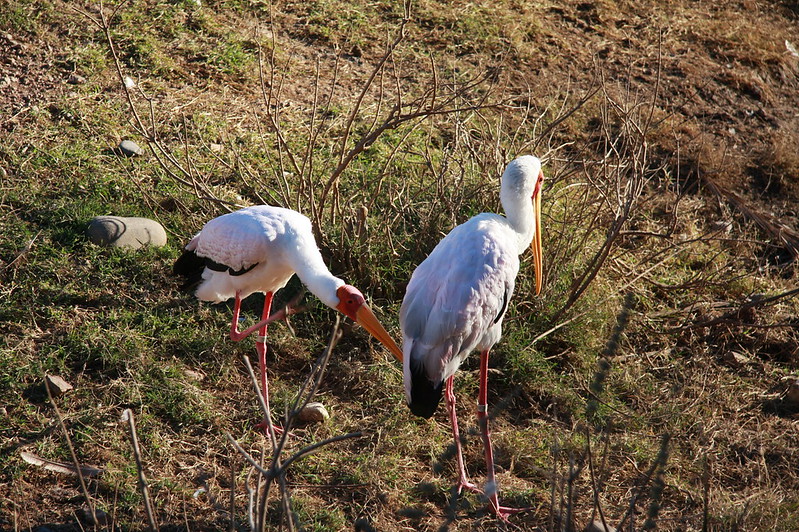
I have a degree from a college in exotic animal training and management. Most people work in zoos these days have some type of life science degree. As they move up in the ranks, a lot of times they require advanced degrees.
I’m actually working on advancing my education right now. I’m doing my master’s at ASU in administration.
We have a behavioral management coordinator who oversees and organizes all of our training and management. One thing we do a lot of is what we call behavioral enrichment. We take natural behaviors and try to mimic those as far as how we feed the animals, how we stimulate the animals. The idea being that we don’t want to feed our animals and have them lay around all day. We want them to be active and nose around. A lot of animal behavior that relates to psychology is there. Basic conditioning is many used for husbandry reasons.
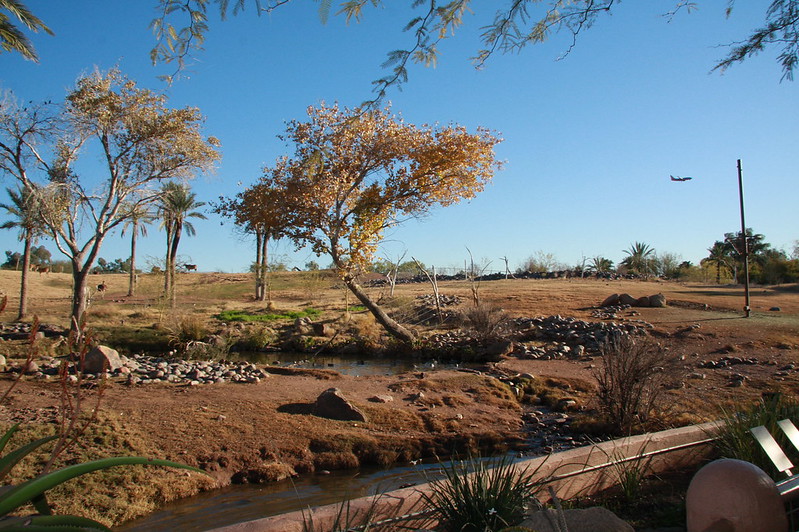
The Phoenix Zoo is dedicated to conservation, education, and exhibition of animals. We want to be a popular, prime attraction in the Phoenix area. We want them to come to the zoo and get inspired to go out and do something to help the natural world. We’re here to bring these animals so people can see them, they can be inspired, learn from them, but also go out and do something with that knowledge that they gained here.
I’ve been in this industry for almost thirty years. I worked at Universal Studios with animals. I ended up working with elephants. I took 18 elephants over to Japan for a six month stint. That was for the Ringling Brothers Circus. That led to a job I got in Kenya. I was there for seven years managing a private animal collection for a land owner over there. We did a lot of rehab work and released a lot of animals.
Came back and tried my hand at a couple other odds and ends, but always ended up back in the animal business. I landed here in Phoenix about three years ago. We have more of a workload in the summer. We have a lot of EVAP coolers. We try to bring animals that do well in the desert heat.
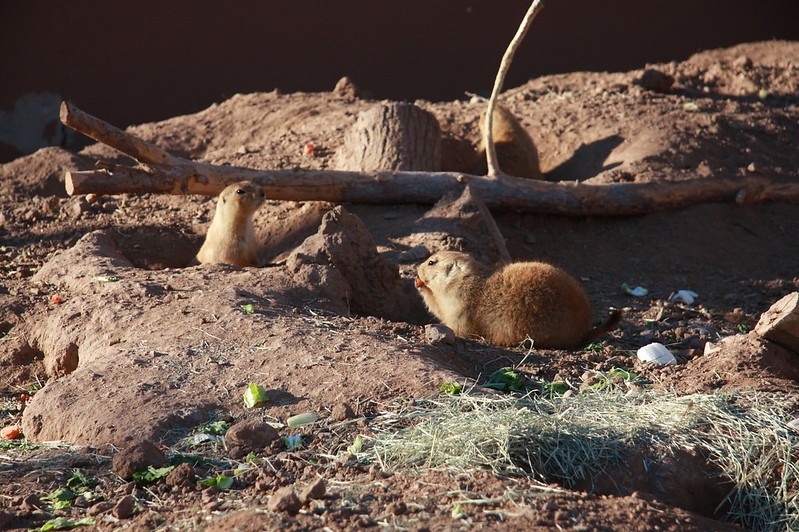
When designing exhibits…you have to know animals…stimulate animals…
How do we stimulate animals in exhibits? We will craft different logs with trap doors with cavities . The animals have to work to get in it. An item we use a lot is called a boomer ball. It’s just a big hard plastic ball. A lot of times we’ll drill holes in those, hang them up, and put the animals food in it. Like the giraffe. They don’t get their food just in pellets in a pile where they’ll sit there and eat them. They have to work. They have to manipulate this ball and turn it sideways. Our elephant program is the same way. They never stay in one place for that long. We hide their food all over the exhibit. We hang their hay up high. We hide it under logs. That way they’re always looking and looking. It’s a good exercise for them because they don’t know where it’s going to come from next.
By doing that we eliminate a lot of really weird behaviors that animals twenty years ago in zoos did because they didn’t have that stimulation.
It’s a rather big task. We’ve been trying to spruce up and fix a lot of areas in the zoo. My range of experience covers just about every angle of the animal business. Because I’ve worked with almost every animal, so as a manager I can come in and know what we need to do. Then I surround myself with individuals that know more about individual animals than I do, and it tends to work pretty good.
All the animals require so many different things. You can do things for a lot less money for birds than you could primates. We try to plan our collection out five to ten years in the future so that any decisions we make can deal with births and deaths as time goes on. I think my broad range of skills. To top it off, I’ve worked construction jobs.
I’d say the most transferable skill that’s got me the furthest is how to use a rake and a shovel.
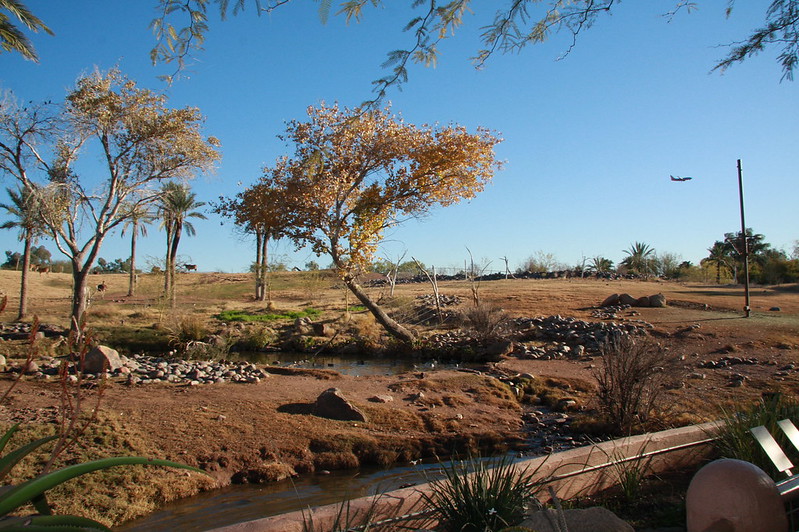
Beyond that, a lot of people say they want to work with animals because they can’t stand people. If you can’t stand people, then don’t come to a zoo. People are what make us function and we’re here for those people. We’re here for you to come out and not only see the animals, but for you to take something home.
You’re always taking to people. Just in this short interview, we could have talked to fifty people that have walked by.
The biggest challenge that I have is tying everything that we do animal wise with what we do staff wise.
For a quick background, the animal business is not a very lucrative area of the job sector. It tends to be a little lower paying. So everyone is here because they want to be here. They’re here because they care about what they’re doing. Not just animal staffing. We’re all here because we like doing it. Sometimes that passion, especially with the keepers and stuff, overrides what we’re trying to do as an institution. To strike that balance where our main emphasis is proper animal care…I try to bring people in on decisions…I can’t bring 80 people in on decisions. You’re trying to balance.
I get a little bit of everything. Some days a lot of something and a little bit of nothing. It’s a pretty big mix.
I spend probably about 25% of my time directly related to animals. I deal with animal issues more than that, but not actually working with the animals. Cleaning, training, shifting…that kind of stuff.
Make sure that you stay in school, get your degree. Get a part time job or volunteer at a zoo. Be flexible. Zoo business is really spread out.
What I love about my job is I get to come to the zoo every day. I’ve felt that this way as a kid and I still do today- zoos are wonderful places and I really feel good to be part of one.
